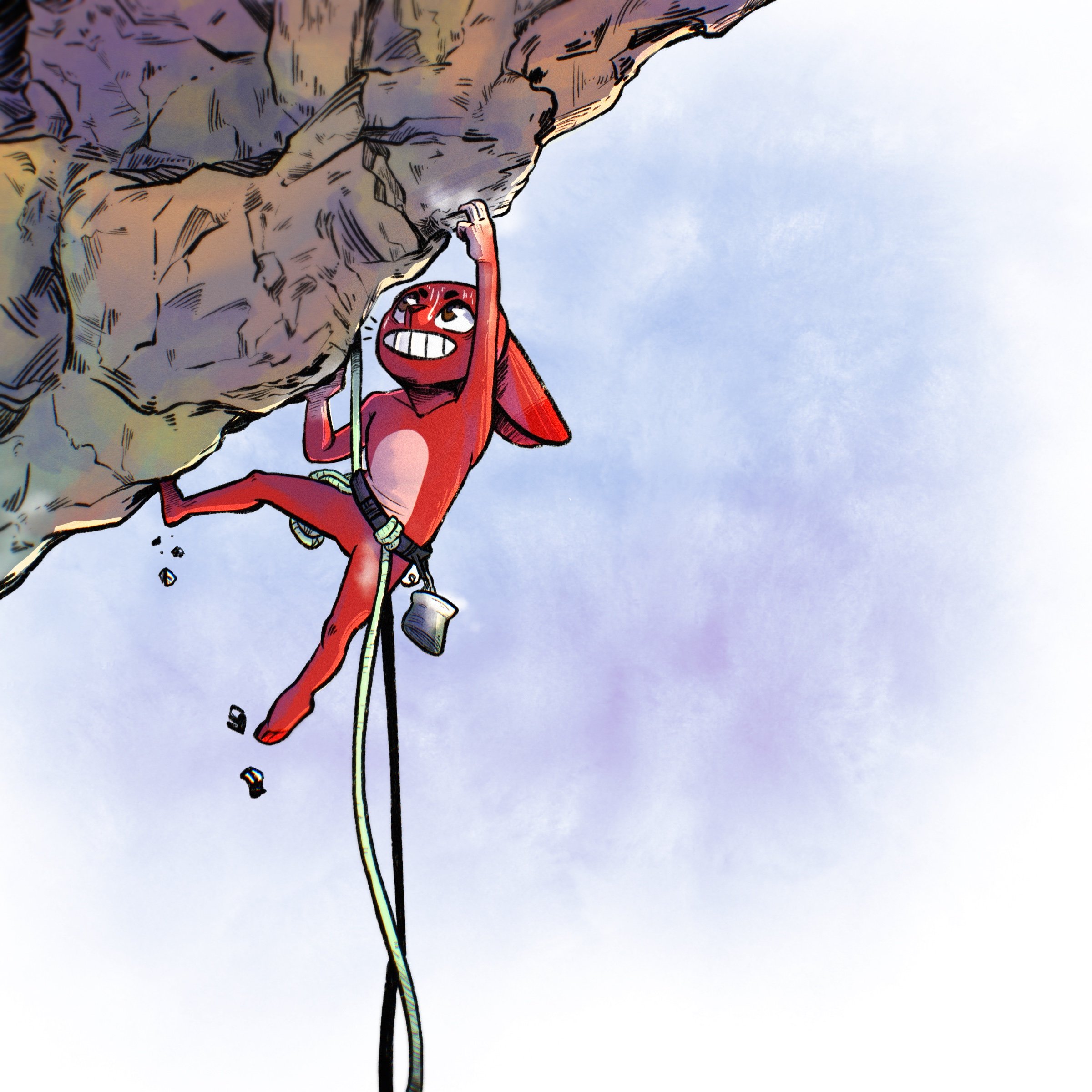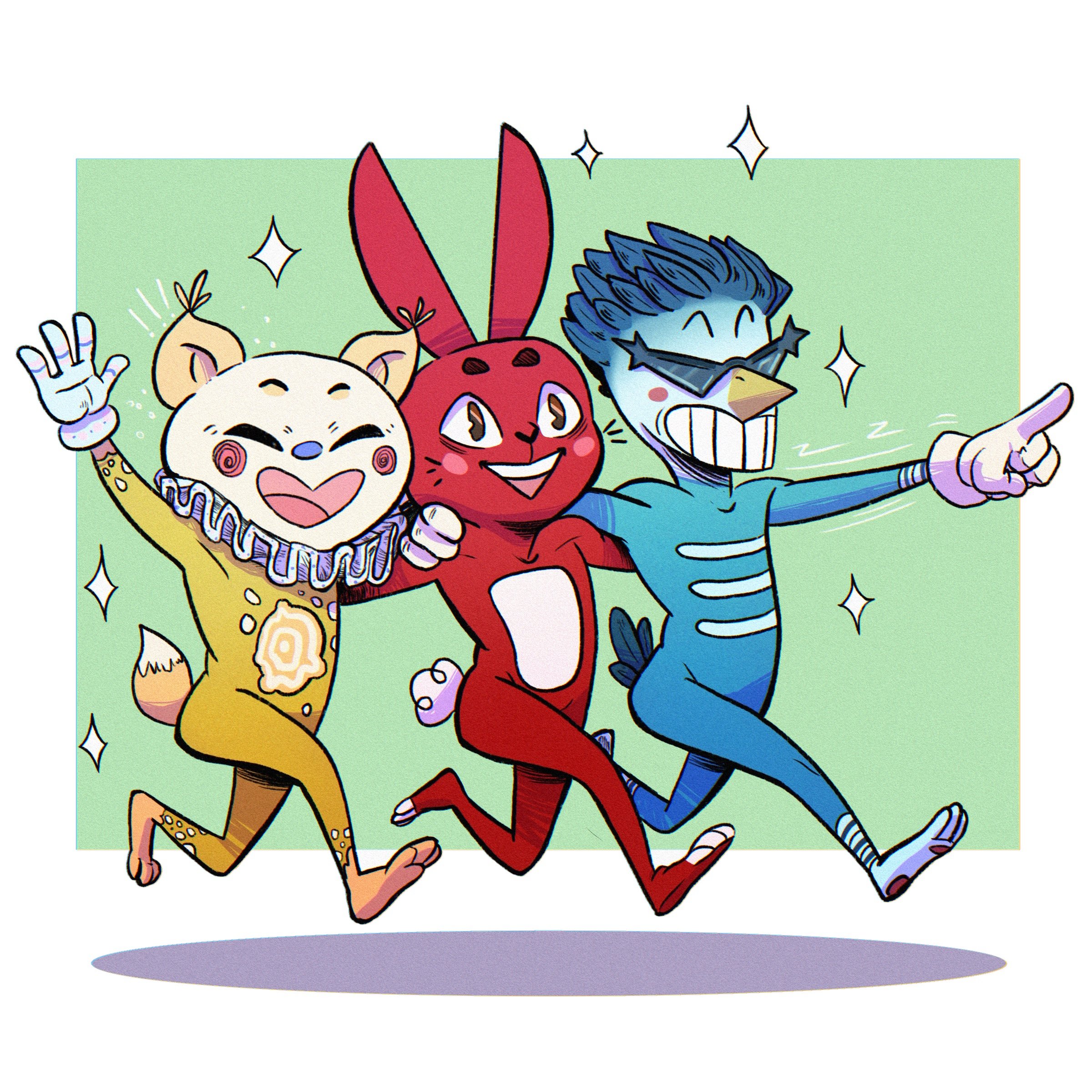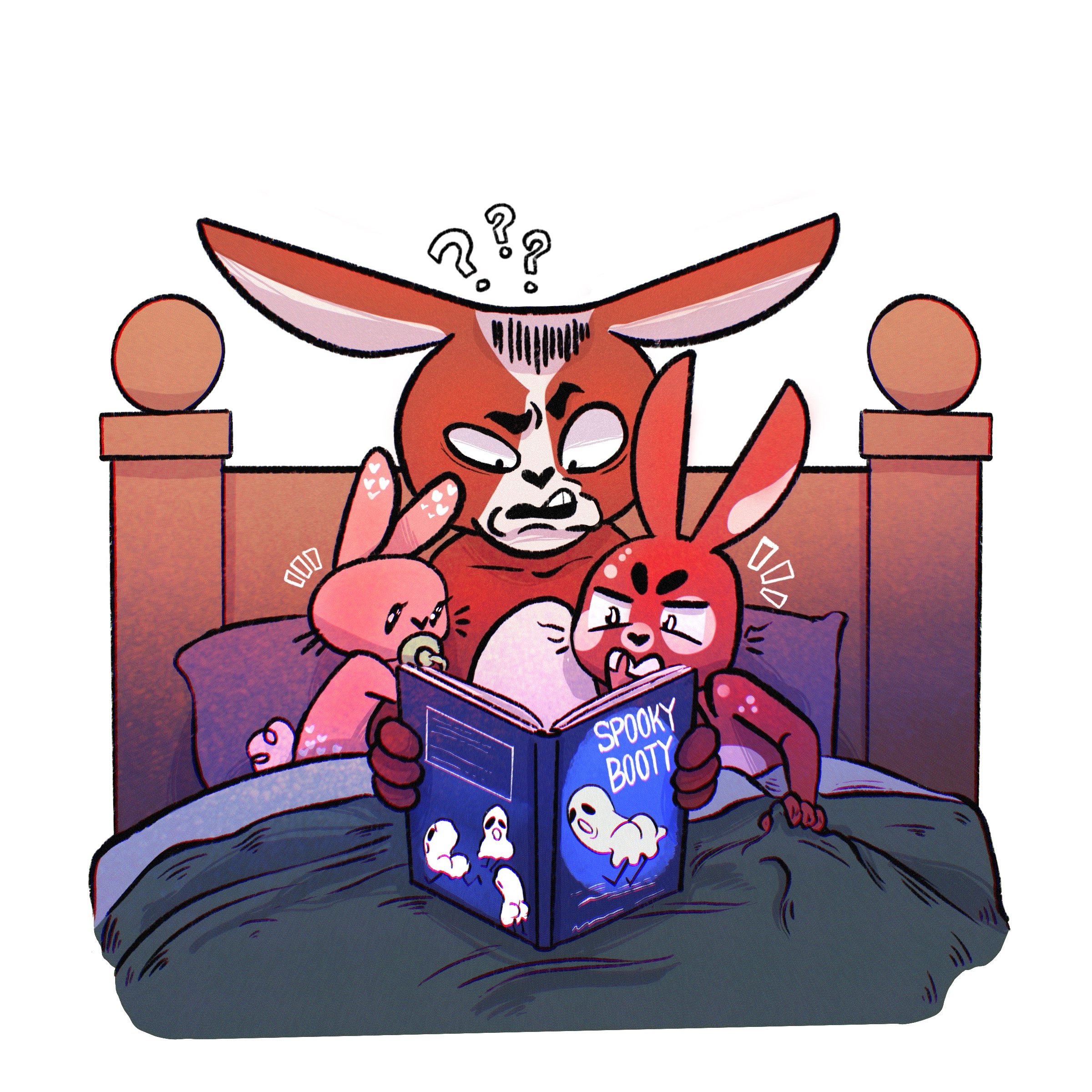Art by Samantha Cotterill
We’re winding back the clock to this interview with illustrator Samantha Cotterill! Join Jake Parker and Lee White to discuss the pros and cons of social media, limiting distractions, adapting to physical challenges, and much more in this insightful episode.
ASK A QUESTION
Note: We’ve done our best to provide relevant links to products mentioned in this podcast. SVSLearn and the 3 Point Perspective podcast are supported by qualifying purchases. Thank you for your patronage!
SHOW LINKS
Samantha Cotterill: website, books
Interview with Ryan Claytor and Jake Parker
Deep Work by Cal Newport
Digital Minimalism by Cal Newport
Chris Sickels (Red Nose Studio)
KEY TAKEAWAYS
Social media can help you start your career and make connections, but it isn’t a good long-term choice for everyone. Consider stepping away if you find yourself comparing, seeking validation, and missing out on the deep work that comes from unplugging.
Stop trying to impress other artists or collect cheap likes with your work on social media; instead, think of your audience and create work that will speak to them.
Limitations- physical, artistic, and otherwise- require you to think creatively. Use them in your favor!
Thanks to Samantha for providing the notes for this episode!
ADHD:
> If working on your own, find a fellow artist to keep you accountable. I have two friends I really respect, and we have a morning Friday deadline to submit our work to each other for review. It helps to keep me on track and motivated.
> For me, it would be very difficult to create work without deadlines. For a long time, I misinterpreted that as meaning I wasn’t REALLY an artist (especially when one is surrounded by others who jump to create during their free time). If I don’t have deadlines, I seem to do everything BUT create art. I need structure and having deadlines fuels my drive and creativity.
> Using the Pomodoro method helps get me into “the zone.” Sitting and doing one big, long focus from the start won’t work for me. I will get antsy at 20 minutes and find myself suddenly needing to distract myself and do something else (check email, get a snack, do a house project, take a bath, etc.). I do four cycles of 20 minutes of work, then a 5-minute stretching/walking break. Then I do a 40-minute session of work with a 20-minute break. I find often that by the 40-minute stretch I’m getting into the zone and can really work.
> Changing things up: My preferred medium is great for that. One day I can focus on photography, another, on building, etc. It allows me to avoid getting bored and keeps my attention up. The variability also enables moments of hyper-focus to occur if a specific avenue is grabbing my attention that day.
> Lists: I cannot survive without lists. I write a list every day of what needs to get done, INCLUDING the boring office stuff that I will easily avoid doing. Lists hold me accountable AND show me that I’m more productive than I think. (Someday I will master the numbered lists of Lee.)
> Inability to start: I often find myself paralyzed with an inability to start a project that may be overwhelming due to fear that I can't accomplish it. As a result, everything but that project will take precedence, and my avoidance will only heighten my anxieties with every day I put it off. Just now I finished a spread that at first seemed impossible. Set in a forest scene, I feared I couldn't pull it off and was starting down that road of avoidance. With twenty years since my diagnosis, I’ve learned how to recognize those moments and deal with them. The forest as a whole may seem overwhelming (I haven’t drawn a lot of nature scenes up to this point), but rather than avoid the whole thing out of fear, take smaller steps to reach that result. Tell yourself, “Today I will draw one tree. That seems doable.” Then draw one tree. That’s one tree more than nothing if you had chosen to avoid it altogether. You may then say, “OK, that wasn’t so bad. Let’s see if I can draw five trees without thinking about the quality in ten minutes.” Soon you will start closing that gap from where you started to where you want to be, and before you know it you’ve knocked out that forest.
SOCIAL MEDIA
Social media can be an incredible tool for many people, and everyone is unique in what they need. I recognize some careers require social media to remain an integral part of their business; I just had to reflect on what was best for me, both personally and career-wise. While social media was incredible for launching my career and helping me find connection, it got to a point where the benefits of using it were becoming roadblocks in my pursuit of growing as an artist.
A few of the reasons (there are many more) I chose to step back from social media:
> Quality of my work: I was no longer being fully present with my work to determine whether or not a piece was the best it could be. Affirmations on Instagram gave me a false sense of accomplishment, and often I would move on to the next piece without ever doing the deep work that particular image might have needed.
> Ability to Fail: Working in the privacy of my studio without sharing every step allows me more room to fail and make mistakes. I have found myself more daring and excited to try and fail with intention, as it leads to discoveries that help my work evolve and grow.
>Focus: I have much more focus and the ability to be fully present in my work since stepping back. The pull of wondering how an image was received through comments and likes was taking me away from putting in the quality work that was needed. If my goal is to put my best work out there for my readers, then setting up a work environment that fosters this is key. Endless scrolling through my phone was not helping get that deep work going.
>Imposter Syndrome: Constantly scrolling through other artists' work can set off an Imposter Syndrome that prevents the continued inward work needed to bring out your best work. You can be inspired by other works, but once it gets to the level of making you question your worth as a creator, then you may need to step away and reset, even if it's just for a short time.
> Creative influx: I found the algorithms of social media to be problematic in regards to inspiration. Over time, work can all look similar, and I noticed my work was evolving to a similar place as well. The world has such a gorgeous variety of art, and I was only seeing a small selection. Ordering magazines from completely different mediums is a great way to get inspired and keep things fresh (I have subscriptions to architecture, photography, painting, and nature magazines). I am looking forward to visiting old bookstores, libraries, and museums to see bodies of work completely different from mine. It's amazing how something completely new and different can inspire your work.
> Marketing: I recognize that I am now in a position where being able to step back was an option. I have an agent and mainly work with publishers. Social media was a great place for me when starting out to get my work out there and be seen. It’s how I ended up with my incredible agent. It was a wonderful tool to get me to where I am. But it’s done its job in that regard, and now it's time for me to forge ahead on my own. Maintaining connection with my readers is still important, and having a dedicated website and newsletter is key in that regard. My marketing time is now spent creating books, trailers, and videos for the publishers to distribute, keeping readers up to date on any happenings with new and upcoming books, and doing behind-the-scenes promotional ads as pub dates near.
MY TYPICAL DAY
My life is a wave of work; some days are crazy productive and others not so much. I have always put great importance on giving myself time to think. Thinking for me is about 75% of my work. Oftentimes at the start of a project, days/weeks will be spent on walks or just sitting outside thinking. Those days are just as important for me as the actual sit-down-and-physically-work days.
When I'm done with the thinking stage, this is my typical week (when I'm not undergoing a week where nothing is working and I want to quit...we all have those days/weeks):
M-F:
7 am: Wake up and get youngest to school (I have a 19-year-old and 16-year-old, so I'm at a very different stage than I was when they were younger!).
8:30: Make a list of what I want to accomplish that day (I put the smallest things down so that I can visually see things check off).
9:00: Start working on my images. Work in 20-25 min increments with little 5-minute stretch breaks until rhythm gets going.
12:00: One hour to have lunch, go for walk.
2:30: Stop drawing before heading out to pick up high schooler at 3:15. I always try to stop at a place where I want to do more; it gets me excited in the morning to wake up and continue.
4-5 pm: Try to get to those pesky emails.
Rest of the evening: dinner, house chores, relax. Again, I'm at a stage where the kids want to do their own thing, so it's very different than when they were younger. There are more moments where I am excited to work on something, so I'll pop into my studio and work a bit at night.
Weekends are more open. I like to go into them flexible. Resting and being with family is important to me, so I tend to go with the flow, being present and in the moment. Again, my kids are at that stage where free time for them is more interesting with other friends, so often there will be moments where I pop into the studio to do some drawing. I LOVE working on photography or teaching myself basics in animation, and weekends are great for exploring that.
WORKING WITH LIMITATIONS
Having severe Rheumatoid Arthritis has made me adjust and work with my limitations. While my treatment plan does wonders to keep my disease at bay, some adjustments needed to be made to keep making art an option.
Adjusting one’s tools: After wallowing over the inability to draw any longer with my traditional nib pen and ink, I realized I needed to figure out a plan B. So a brush pen was introduced, and soon I had found a pain-free alternative to drawing with varied line. Certain processes are simply not doable anymore, and thus working with limitations has become the center point of everything I make. In a way, these limitations have made my work more creative. I am forced to think outside of the box and find more uses of fewer methods/materials, which I am finding results in an explosion of ideas. If you want to make art, you can find a way to make art.
Recognize that some days may just not work, and that’s ok. There are still moments where I have a major flare-up episode, which can result in days of extreme fatigue and pain. Work can wait. I need to focus on myself first, and the more I do that, the sooner I can get back to creating. Remembering that the step back is a “right now” moment helps you know that the temporary struggle isn’t forever. (This applies to so much in life. Our “right now” struggle moments can encompass a day to several years, but they are still "right now" moments and not forever. Things will get better. You will find a way to make it work.)
LINKS
Svslearn.com
Jake Parker: mrjakeparker.com. Instagram: @jakeparker, Youtube: JakeParker44
Will Terry: willterry.com. Instagram: @willterryart, Youtube: WillTerryArt
Lee White: leewhiteillustration.com. Instagram: @leewhiteillo
Daniel Tu: danieltu.co.
Lily Howell: lilycamille.com
If you like this episode, please share it, subscribe, and let us know your thoughts or if you learned something new!
If you want to be a part of the discussion and have your voice heard, join us at forum.svslearn.com.




















